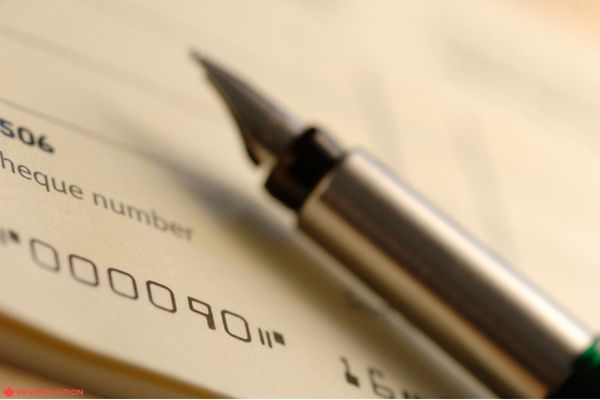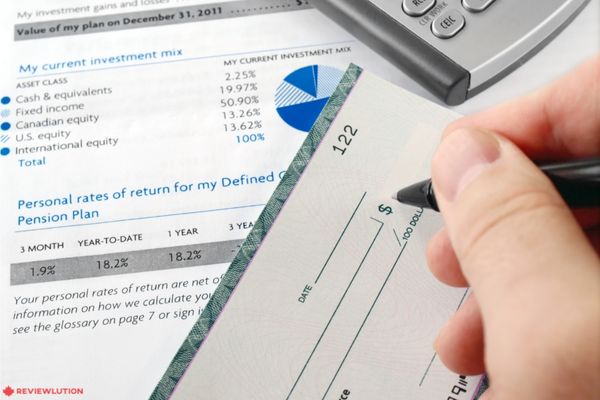What is a Certified Cheque?
Believe it or not, credit cards can’t solve all your problems!
If you’re in the market for a house or a car, you’ll need to pay with a certified cheque. But if you’ve never had to buy anything remotely close to this, you might be confused about what it all means. Luckily, we’re here to straighten out the details and tell you all there is to know about them.
Let’s get into it!
What is a Certified Cheque?
If you want a certified cheque in Canada, you’ll receive a cheque that has been guaranteed by a bank or credit union. Therefore, this means that it holds guaranteed funds and won’t bounce if it’s cashed within the timeframe. Essentially, certified cheques are those that the issuing bank has approved, certifying you have enough money for your payment.
They’re generally required when businesses aren’t aware of the buyer’s creditworthiness and aren’t willing to risk taking personal cheques. Therefore, the bank holds the funds and guarantees the cheque will go through. In fact, many Canadians will be familiar with these cheques after receiving the Economical Insurance cheques in late November of last year.
These types of cheques are most often used for large purchases that require a lot of money, such as a car, a down payment on a house, a high-value item, etc. Moreover, they offer a fully secure form of payment. Fortunately, these bank cheques are also easily distinguishable because they typically have a special stamp or logo from the financial institution.
How to Get a Certified Cheque?
Next, we’ll mention the steps needed to get a certified cheque from the financial institution you’ve chosen. However, you must ensure you have the required funds in your chequing account before moving on.
Plus, you’ll need to see whether the institution you’re visiting has a certified chequing service, as the certified cheques from RBC are no longer available if drawn on personal accounts. So, make sure you have all the information needed beforehand to avoid unnecessary obstacles.
Request a certified cheque
Expectedly, the first thing you need to do is request a certified cheque from a bank branch or credit union in your vicinity. Then, the bank teller will look at your account to confirm you have the necessary funds for your transaction.
Verify your identity
Following your request, the teller will need to verify your identity and signature. Therefore, before going in, you’ll need to bring a valid form of identification, such as a driver’s licence, ID, or passport. After this, they will earmark the money for your specific condition.
Fill in the cheque
After the employee processes your cheque, they’ll hand it over to you to fill in your information. Usually, you can fill it in at the counter, like a void cheque.
Get your cheque signed by the bank teller
When you have filled in your certified cheque, hand it back to the bank teller and have them sign it. The teller will place a stamp or signature on your cheque, showing that they have guaranteed your funds and they are now available.
Pay a fee (if applicable)
Finally, some financial institutions will charge you a fee for chequing. Generally, the price ranges from $10 to $15. However, if you have a bank or savings account at that institution, you might waive the fee due to account holder benefits, so make sure you ask beforehand.
Certified Cheque vs Cashier’s Cheque
You might have realized that most of what we’ve written so far also applies to cashier’s cheques. So, our guide wouldn’t be complete without briefly explaining this alternative type of payment.
What Are Cashier’s Cheques?
A cashier’s cheque is an official cheque issued and signed by a bank. By employing this cheque, the bank draws from its own account to get the payment to the recipient. Moreover, many people use cashier’s cheques to make down payments on homes, pay mortgage costs, and buy vehicles or plots of land.
Fortunately, such cheques provide a significant security measure to everyone involved because they can’t be returned and need signatures from one or more bank employees. To go through with this method, a bank teller will ask for your ID, the payee’s name, and the cheque amount.
How Do They Compare to a Certified Cheque?
Cashier’s cheques and certified cheques have many similarities. Namely, they’re both used for large purchases you wouldn’t make every day and constitute official bank cheques. Plus, they both make it difficult for the payer to stop or cancel the payment.
However, they also differ in some ways, mainly in the level of security and cost. One of their main differences is that cashier’s cheques are drawn from the bank’s account instead of your personal account. Therefore, the bank is responsible if the cheque bounces.
Secondly, cashier’s cheques employ extra security measures, including signatures from more bank employees and watermarks. In contrast, with certified cheques, the bank only verifies that the money was available when the cheque was issued.
Finally, cashier’s cheques are usually more expensive than certified ones because of the extra precautions. In fact, they generally come with a fee of up to $20, depending on the financial institution.
Bank Draft vs Certified Cheque
If you’ve ever paid with bank drafts, you can recognize how similar this method is to certified bank cheques. However, they’re not identical. Below, we’ll discuss what bank drafts are and how the two compare.
What Are Bank Drafts?
Bank drafts are payment methods that allow the issuing bank to guarantee the payment to the payee on behalf of the payer, who is usually an account holder at the same bank.
To go through with this method, the bank has to check whether the payee has sufficient funds in their account to complete the transaction. If they do, the bank signs and issues a bank draft and helps you transfer the payment. Most of the time, this mode won’t require your signature because they already have your account details.
Furthermore, many consider this method more secure than a personal cheque because the issuing bank has to honour the draft and provide a promise of payment. Plus, bank drafts are very convenient, easy, and quick.
How Do They Compare to a Certified Cheque?
First, the key difference between bank drafts and certified cheques is that drafts are issued by banks and are guaranteed by them, while cheques are given by customers and are only verified by bank tellers. Cheques work in a way that the bank employee verifies the funds and keeps the amount aside until you deposit the cheque. Meanwhile, the bank directly transfers bank drafts.
Second, drafts don’t require the payer’s signature, while cheques do. Moreover, banks charge lower fees for drafts but higher ones for cheques.
Regarding similarities, both drafts and cheques make it very difficult for payers to stop or cancel the payments, as the only possible ways are for the bank to lose or destroy the form. Even then, they will usually provide a replacement issue.
Alternatives to Certified Cheques
Aside from certified cheques, you can also guarantee payment in other ways when making a purchase.
Wire Transfers
Wire transfers are electronic transfers of funds that can be done between two bank accounts. Moreover, you can also use them to send money to someone who doesn’t have a bank account. Luckily, these transfers are a fast and convenient way to send money if you don’t want to write a cheque.
Money orders
You can also use money orders in Canada as an alternative to certified cheques. Money orders are paper payments that show that you have paid for something in advance (prepaid voucher), and they’re typically used when sending money through the mail.
Cash
Finally, the most surefire way of payment is through direct cash. Unsurprisingly, this is an excellent option that gives the recipient confidence in the transaction. However, if you’re looking at large purchases, cash may not be the most practical choice because it can cause a hassle.
Conclusion
Well, that’s it for our guide on certified cheques!
Now you’re well on your way to becoming an expert on the topic, which will greatly help you avoid scams and irregularities. If you don’t want to use cheques, you can make do with the alternative options we’ve provided and ensure you go through with your payment safely.
FAQ
To certify a cheque, you’ll need to ask the bank teller to give you one. Then, you have to fill it in, show your ID, and wait for the teller to verify your funds and mark your cheque as certified.
Technically, cheques don’t expire. However, some banks might reject a cheque if it’s been more than six months since the issue date.
Certified cheques have the name and address of the payee, the payment amount, the payee’s signature, and a stamp or logo from the issuing bank.
Generally, no. Payees can’t stop the payment once they have handed over the cheque because the funds are frozen until they’re deposited to the person or institution for which they’re intended.












